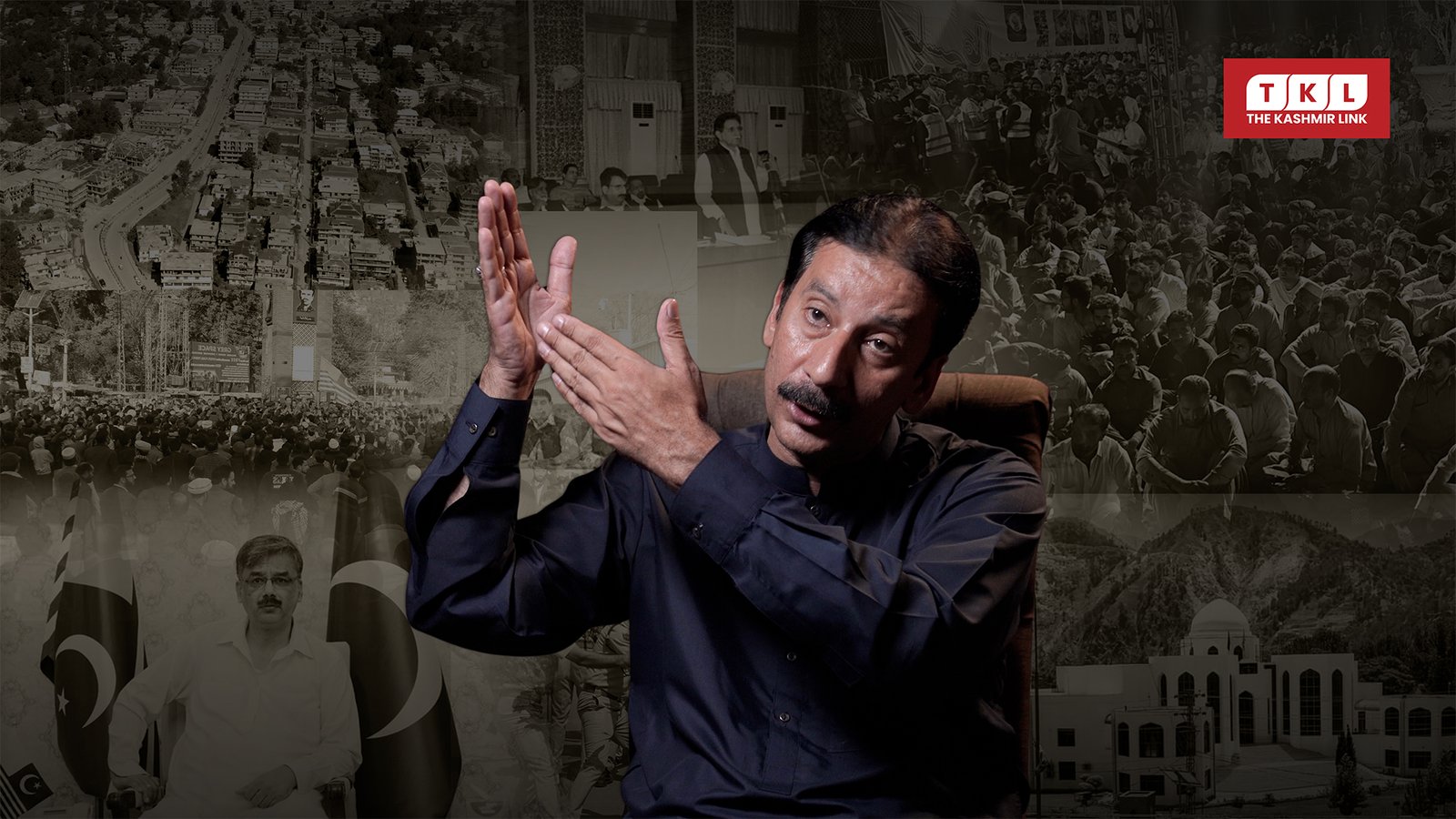
Impact of Earthquakes on Azad Kashmir: Hope in Ruins
Impact of Earthquakes: Nestled in the northern districts of Pakistan, Azad Jammu and Kashmir (AJK) is a staggering mix of glorious mountains, rich valleys, and quiet streams. However, underneath its
Impact of Earthquakes: Nestled in the northern districts of Pakistan, Azad Jammu and Kashmir (AJK) is a staggering mix of glorious mountains, rich valleys, and quiet streams. However, underneath its excellence lies a secret risk — tremors. Various quakes have shaken this seismically dynamic locale throughout the long term, leaving behind annihilation and sadness.The most destructive of these tremors was the 2005 calamity, which changed the scene of Azad Kashmir as well as tried the flexibility of its kin.
Here, we investigate the effect of tremors on Azad Kashmir, the illustrations gained from the 2005 disaster, and the continuous endeavors to remake more grounded, stronger networks.
A History of Impact of Earthquakes: A Region in the Earth’s Grip
Azad Jammu and Kashmir sits on the volatile boundary of the Indian and Eurasian tectonic plates, making it one of the most earthquake-prone areas in the world. Over the centuries, the region has experienced several significant earthquakes. However, none have been as destructive as the 2005 earthquake, which struck on October 8, with a magnitude of 7.6 on the Richter scale.
The dam forced thousands of households to leave the flooded areas, which was one of the worst effects of its construction. The reservoir flooded entire communities and forced residents to move. Since agriculture served as their main source of income, many people lost both their homes and their livelihoods.
The 2005 Impact of Earthquakes: A Catastrophe That Shook Azad Kashmir
At around 8:50 AM on that fateful day in 2005, the ground beneath Azad Kashmir trembled violently, triggering an unprecedented disaster. The earthquake caused widespread devastation, particularly in the towns and villages of Azad Kashmir, such as Muzaffarabad, Balakot, and Rawalakot.

Loss of Lives and Widespread Suffering from the Impact of Earthquakes
The human toll of the 2005 earthquake was devastating. More than 86,000 people lost their lives, with over 69,000 fatalities reported in Pakistan-administered Azad Kashmir alone. Thousands more suffered injuries, and millions lost their homes. Entire families perished, and entire communities were displaced, which led to a massive humanitarian crisis.
In the aftermath, survivors faced unimaginable trauma. Many villages located in remote, mountainous areas severely limited access to medical aid and rescue teams. For days, survivors had to dig through rubble with their bare hands, desperately searching for loved ones. The emotional scars of the tragedy would stay with the people of Azad Kashmir for years to come.
Destruction of Infrastructure: A Region in Ruins
The earthquake left the framework of Azad Kashmir shredded. Streets, bridges, schools, hospitals, and homes were reduced to rubble. The earthquake cut off communication lines and collapsed power networks, making it almost impossible for emergency services to reach the affected areas quickly.
The annihilation of homes was especially extreme in rustic regions, where many houses were constructed utilizing customary, non-seismic tremor-safe materials. This added to the boundless breakdown of structures and left incalculable families without cover. For a long time and even a very long time after the calamity, numerous survivors lived in impermanent safe houses, attempting to remake their lives.
Economic Impact of Earthquakes: A Setback for Azad Kashmir’s Economy
The economic damage caused by the 2005 earthquake was staggering. Azad Kashmir’s economy, which relies heavily on agriculture and small industries, suffered immense losses. Fields destroyed, crops wiped out, and livestock perished, severely impacting the livelihoods of many families.
The destruction of roads and infrastructure disrupted trade, making it difficult for goods to be transported. Many local businesses closed, and unemployment soared as industries took years to recover. While international aid provided some relief, the economic recovery of Azad Kashmir was slow and challenging.
Post-Earthquake Reconstruction: The Path to Recovery
In the face of such immense destruction, the people of Azad Kashmir, supported by both the Pakistani government and international organizations, embarked on a long and difficult journey of reconstruction. From immediate relief to long-term rebuilding efforts, the process was both heroic and heart-wrenching.
Immediate Relief Efforts: A Swift Response to Save Lives
In the days following the earthquake, saving lives was the priority. Rescue operations launched throughout the affected areas provided survivors with food, water, and medical support. Relief camps housed the displaced population, and efforts reunited families. Despite the challenges posed by damaged infrastructure, the local and international reaction was swift.

Rebuilding Infrastructure: Laying the Groundwork for a Safer Future
Rebuilding the region’s infrastructure became a key focus of post-earthquake efforts. They reconstructed roads, bridges, hospitals, schools, and homes, often from scratch. International aid financed these efforts, and the Pakistani government worked tirelessly with NGOs to rebuild the region.
A major focus of the reconstruction was on making homes and public infrastructure earthquake-resistant. New building techniques and materials were introduced to ensure that future quakes would not have the same devastating impact. Additionally, restoring basic services such as water supply, sanitation, and healthcare was essential for the well-being of the affected population.
Psychological and Social Rehabilitation: Healing from Trauma
Beyond the physical rebuilding, there was also a focus on addressing the psychological scars of the earthquake. Many survivors experienced trauma, losing loved ones and homes. Psychological support programs were launched to help people cope with the grief and stress caused by the disaster.
Efforts also restored the livelihoods of the people affected. Authorities established small businesses and agricultural programs to help people get back on their feet. Educational programs ensured that displaced children could continue their schooling despite the challenges.
Lessons Learned: Building Resilience in Azad Kashmir
The 2005 earthquake was a tragedy, but it also taught Azad Kashmir—and the world—valuable lessons in disaster preparedness, resilience, and recovery. One of the most important lessons was the need for earthquake-resistant infrastructure.
The Importance of Earthquake-Resistant Construction
The 2005 disaster demonstrated the need for better construction methods in seismic zones, as it devastated non-earthquake-resistant buildings. The Azad Kashmir administration, working with engineers and specialists, implemented new construction rules in the years after the earthquake that mandated the use of earthquake-resistant materials and designs.

These changes have been especially important in the construction of public buildings such as schools, hospitals, and government offices. By building structures that can withstand seismic shocks, the region prepares itself better for future earthquakes.
Impact of Earthquakes: Preparing Communities for Future Quakes
In addition to strengthening infrastructure, raising public awareness about earthquake safety has been a priority. Organizations have launched educational campaigns to teach people how to build safer homes, evacuate in case of an earthquake, and respond to a disaster when it strikes.
Trainers are educating communities in earthquake-prone areas in disaster response and first aid, ensuring they can respond quickly and effectively when future earthquakes occur.
Impact of Earthquakes: Moving Forward
Despite the many difficulties faced by Azad Kashmir after the 2005 seismic tremor, the locale has gained colossal headway. The modifying endeavors have reestablished the framework as well as reinforced the local area’s capacity to endure future fiascos.
As the travel industry keeps on filling in this lovely area, it is urgent to recollect that building flexibility is a continuous cycle. Azad Kashmir’s dazzling valleys and snow-covered tops, which once bore the scars of catastrophe, presently stand as an image of the locale’s recuperation and strength.
Individuals of Azad Jammu and Kashmir have demonstrated that earnestly, with collaboration, and with the right preparation, they can revamp even notwithstanding misfortune. By proceeding to put resources into a quake-safe foundation, public mindfulness, and fiasco readiness, Azad Kashmir is well en route to turning into a more secure and stronger locale, prepared to confront the difficulties of tomorrow.






